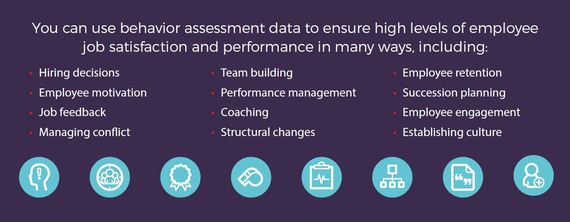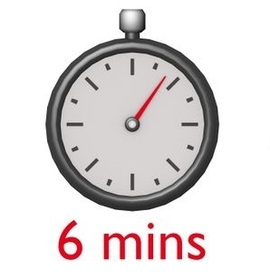Assessments can help you evaluate candidates, develop employees, and give you confidence and accuracy in the selection and development of talent that you depend on to make your company successful.
However, assessments come in many different forms, and not every assessment is right for every environment and circumstance.
Here are 10 key criteria to consider when selecting an assessment solution:
1. How will the data be used?
Each type of assessment addresses specific aspects of an individual. Behavioral assessments reveal data about people in their work environments, and personality assessments ascertain people's personality types. Decide which type of information would be most valuable to your organization.
2. Is the data reliable?
Are people's scores consistent and repeatable over time? Does the assessment effectively predict important workplace behaviors that drive metrics such as sales, customer satisfaction and turnover?
3. What is the pricing model?
There are different pricing models out there: subscription-based, pay-per-user, or pay-per-assessment. Determine what you'll be using the assessment for and which pricing model is best for you.
Some providers may provide assessment results that can be analyzed as an employee develops. This may require you to deploy several assessments over the employee's life-cycle, which may make pay-per models less attractive.
When it gets expensive, some companies limit themselves to only assess the C-suite or very senior management, at which point they are only gathering data on a small percentage of their workforce.
4. How long does it take to complete?
Assessments vary in length from 5 to 90 minutes to complete. Consider your employees' and candidates' time when evaluating different options. Data accuracy and reliability does not necessarily correspond to the length of the test, so understanding the output of the test results and how you plan to use them is critical.
5. How is the data gathered?
Tests can be either free choice or forced choice. Free choice means that the test takers select only what they feel applies to them, while forced choice gives a set number of answers and the testers are required to pick one. Evaluate which format gives you the most useful and relevant data.
6. How are the assessment results presented?
Results of assessments can either be written in the form of a report or a more visual graphic, where data is presented in a quick snapshot that can be interpreted immediately. Some written-form outputs can be incredibly time consuming if you manage more than a handful of people.
7. What level of support is required?
Tests can be administered by someone certified within your organization or by the test company. Determine if the ability to administer and interpret test results within your company is a better fit for you. Also confirm that there's ongoing support from the test vendor and that they understand your business challenges.
Using assessments in your organization is not enough -- introducing assessments as part of a broader effort to affect change, provide clarity and remove unnecessary obstacles between you and your objectives, and increase employee engagement, will ensure impact on performance.
8. Is the assessment global?
If you have a global workforce, it's important to be able to administer the test in an employee's native language and have analyst support within your area. Verify that the assessments and results are available in all relevant languages.
9. Can the data be used with groups and teams?
In addition to providing data about individual employees, some assessments can also give insights into group dynamics, which can be used to address group conflicts and evaluate performance. If group analysis is important, make sure the data is available for that use. Some tools allow you to compare two behavioral patterns, or even entire teams, to get a better understanding of what makes a top-performer in your organization.
10. Is the assessment EEOC compliant?
Standards organizations, such as the Equal Employment Opportunity Commission (EEOC), provide compliance guidelines for different aspects of assessments. Ensure that the solution you choose is free of bias with respect to the respondent's age, gender, and ethnic group.
The need for people-data is critical. If you can fix your people-related issues, the rest is easy... Selecting the best assessment can differentiate your organization.
Thanks for reading - If you enjoyed this article, please click the Like button above and let me know! (and if you like it, why not share it?)
About the Author:
David B. Nast owns Nast Partners based in the Greater Philadelphia area. David is an Award-Winning Certified Business Coach with over 25 years of experience in Executive Coaching, Leadership Development, Talent Management, Training, Career Coaching, Executive Search, and Human Resources.
He has coached thousands of CEOs, Business Owners and Executives.
For additional insights from David, visit his LinkedIn Pulse Author Page and follow him on Twitter @DavidBNast. You can also email David at dave@nastpartners.com.




